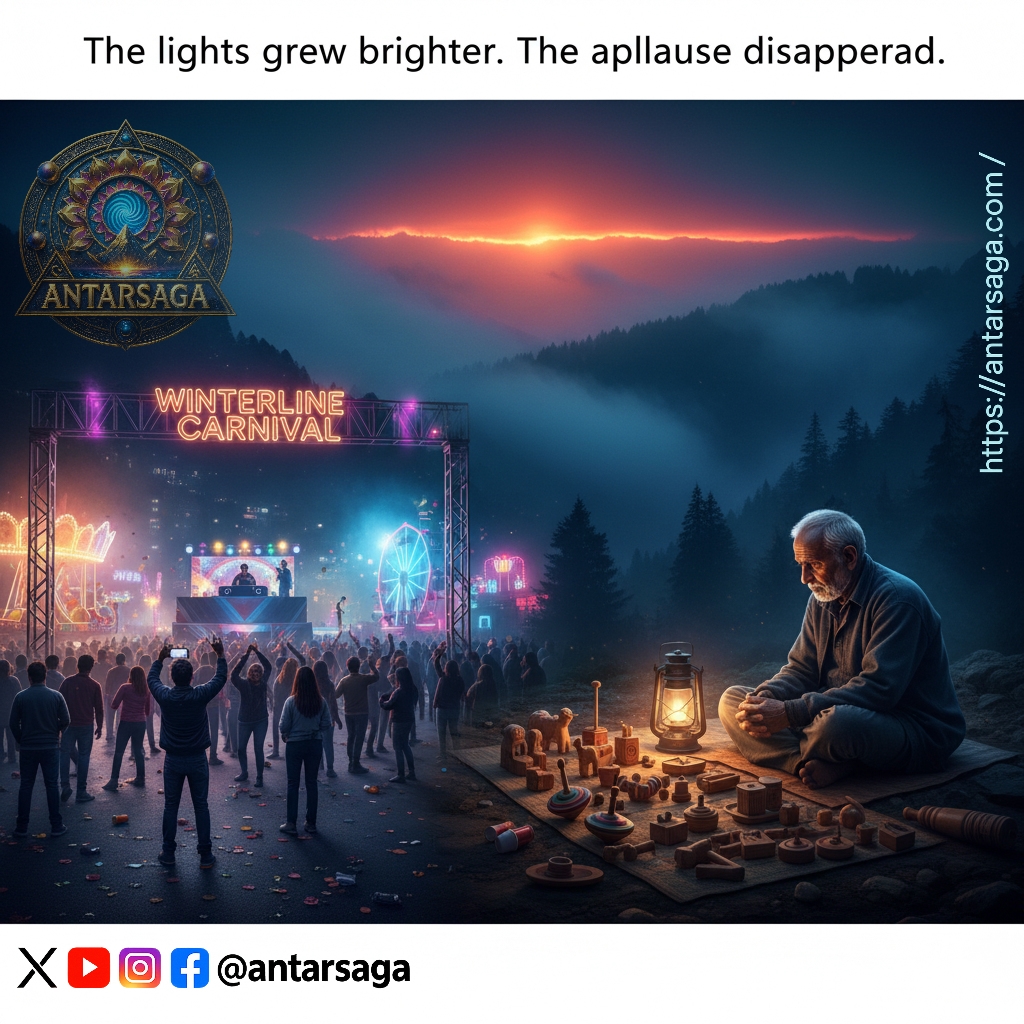Mussoorie Winterline Carnival Sparks Debate: Locals Call for Revival of Mussoorie’s Cultural Soul
Mussoorie:
Between Two Lights: Mussoorie’s Festival and Its Forgotten Middle
Every December, as Mussoorie’s sky paints that mysterious golden band called the Winterline, the town prepares for celebration.
This year too, the Winterline Carnival promises colour, music, and movement — but beneath the lights, there’s a quieter tension.
Not between people, but between purpose and perception.
🎭 The Politics of a Festival
Once upon a time, Mussoorie’s Autumn Festival was the hill’s heartbeat. Ten long days of dance, drama, laughter, and school parades — the festival wasn’t organised for the people; it was organised by the people.
Now, the Winterline Carnival, born in the 2010s as a tourism initiative, has slowly become a political stage — its light shows and sponsorships gleaming brighter than the folk instruments that once echoed through the valley.
Former Palika President Manmohan Singh Malla isn’t entirely wrong when he calls it “unfortunate” that crores are spent on festivities while the town limps after landslides and broken roads.
But the irony runs deeper — Mussoorie, the hill of dreams, is today caught between two economies: one of culture, and one of optics.
🪶 The Vanishing Artisans
For years, local artisans, folk singers, and storytellers — the soul of these hills — have quietly faded into the mist.
Many were never called back; some stopped waiting.
They don’t demand big stages or budgets, just belonging.
In the old Autumn Festivals, their voices carried across every lane, each echo telling the world that culture wasn’t imported — it was lived.
Now, as one folk artist rightly put it,
“We have become guests in our own town’s celebration.”
🏛️ The Committee and the Crowd
The Winterline organising committee, with its mix of administrative and business interests, has a different lens: tourism, hospitality, and footfall.
For them, a carnival must dazzle — it must photograph well.
Their argument isn’t wrong either. Tourism keeps Mussoorie alive.
But art without authenticity is like a flute without breath.
The town doesn’t need to choose between tourism and tradition.
It simply needs to remember that the two were never enemies — until we made them so.
🌄 Maybe We Need Both
Maybe Mussoorie needs two festivals, or perhaps one that breathes like both:
A Winterline Carnival that dazzles tourists and revives the economy.
And a Cultural Autumn Week — an annual, community-driven celebration of Garhwali, Jaunsari, and Himalayan heritage, run by schools, artisans, and locals.
Or better still, a fusion model —
a ten-day “Winterline–Autumn Festival” that begins with lights and ends with roots.
Let the first five days be for the world to see Mussoorie,
and the next five for Mussoorie to see itself.
That’s how identity is preserved — not in separation, but in sequence.
🕉️ In Search of the Hill’s Soul
It’s poetic — that the 2025 carnival is dedicated to Indramani Badoni, the Pahadi Gandhi, who stood for Lok Swaraj — the right of local people to decide their own path.
If this carnival truly wants to honour him, it must bring back the one thing Badoni fought for: participation, not performance.
Tourists can clap, cameras can roll — but festivals that endure are the ones that grow from soil, not spotlights.
Mussoorie doesn’t need to pick a side between Autumn and Winter.
It simply needs to remember the season it was born from — the rhythm of belonging.
Because when the Winterline fades from the sky,
what remains is not light — but the silence of the hills asking softly,
“Who is this festival really for?”
